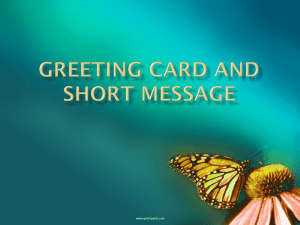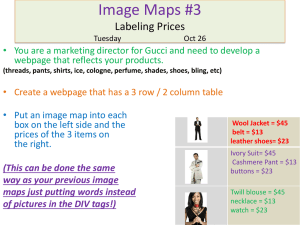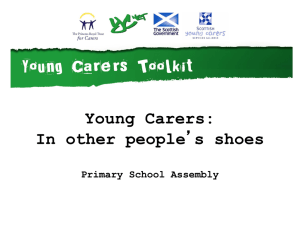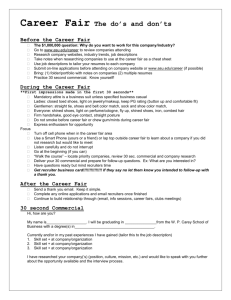Sample entrance essay
advertisement
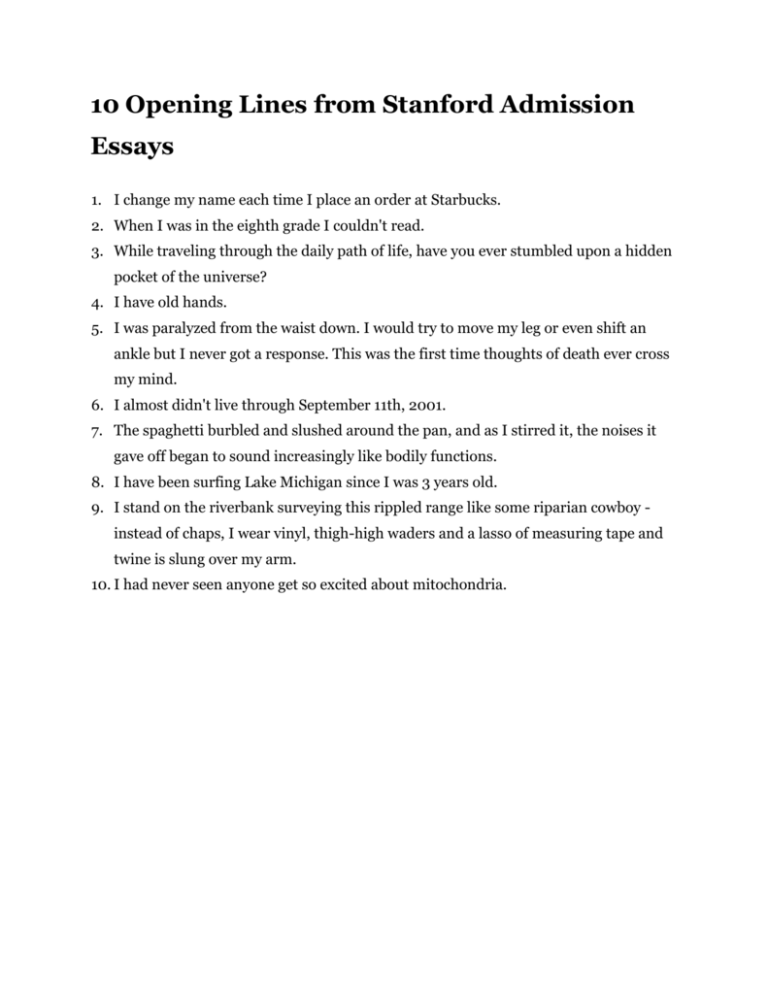
10 Opening Lines from Stanford Admission Essays 1. I change my name each time I place an order at Starbucks. 2. When I was in the eighth grade I couldn't read. 3. While traveling through the daily path of life, have you ever stumbled upon a hidden pocket of the universe? 4. I have old hands. 5. I was paralyzed from the waist down. I would try to move my leg or even shift an ankle but I never got a response. This was the first time thoughts of death ever cross my mind. 6. I almost didn't live through September 11th, 2001. 7. The spaghetti burbled and slushed around the pan, and as I stirred it, the noises it gave off began to sound increasingly like bodily functions. 8. I have been surfing Lake Michigan since I was 3 years old. 9. I stand on the riverbank surveying this rippled range like some riparian cowboy instead of chaps, I wear vinyl, thigh-high waders and a lasso of measuring tape and twine is slung over my arm. 10. I had never seen anyone get so excited about mitochondria. Allison Dencker Stanford University, Class of 2006 As you reflect on life thus far, what has someone said, written, or expressed in some fashion that is especially meaningful to you. Why? According to Mother Teresa, “If you judge someone, you have no time to love them.” I first saw this quote when it was posted on my sixth-grade classroom wall, and I hated it. Rather, I hated Mother Teresa’s intention, but I knew that the quote’s veracity was inarguable. I felt that it was better to judge people so as not to have to love them, because some people don’t deserve a chance. Judgments are shields, and mine was impenetrable. Laura was my dad’s first girlfriend after my parents’ divorce. The first three years of our relationship were characterized solely by my hatred toward her, manifested in my hurting her, each moment hurting myself twice as much. From the moment I laid eyes on her, she was the object of my unabated hatred, not because of anything she had ever done, but because of everything she represented. I judged her to be a heartless, soulless, two-dimensional figure: she was a representation of my loneliness and pain. I left whenever she entered a room, I slammed car doors in her face. Over those three years, I took pride in the fact that I had not spoken a word to her or made eye contact with her. I treated Laura with such resentment and anger because my hate was my protection, my shield. I, accustomed to viewing her as the embodiment of my pain, was afraid to let go of the anger and hate, afraid to love the person who allowed me to hold onto my anger, afraid that if I gave her a chance, I might love her. For those three years, Laura didn’t hate me; she understood me. She understood my anger and my confusion, and Laura put her faith in me, although she had every reason not to. To her, I was essentially a good person, just confused and scared; trying to do her best, but just not able to get a hold of herself. She saw me as I wished I could see myself. None of this became clear to me overnight. Instead, over the next two years, the one-dimensional image of her in my mind began to take the shape of a person. As I let go of my hatred, I gave her a chance. She became a woman who, like me, loves Ally McBeal and drinks a lot of coffee; who, unlike me, buys things advertised on infomercials. Three weeks ago, I saw that same Mother Teresa quote again, but this time I smiled. Laura never gave up on me, and the chance she gave me to like her was a chance that changed my life. Because of this, I know the value of a chance, of having faith in a person, of seeing others as they wish they could see themselves. I’m glad I have a lot of time left, because I definitely have a lot of chances left to give, a lot of people left to love. Daniele Melia New York University, Class of 2007 A range of academic interests, personal perspectives, and life experiences adds much to the educational mix. Given your personal background, describe an experience that illustrates what you would bring to the diversity in the college community or an encounter that demonstrated the importance of diversity to you. I feel sick. I’m nervous and my stomach’s turning. The room is lined with neat rows of desks, each one occupied by another kid my age. We’re all about to take the SATs. The proctor has instructed us to fill out section four: “race.” I cannot be placed neatly into a single racial category, although I’m sure that people walking down the street don’t hesitate to label me “caucasian.” Never in my life has a stranger not been surprised when I told them I was half black. Having light skin, eyes, and hair, but being black and white often leaves me misperceived. Do I wish that my skin were darker so that when I tell people I’m black they won’t laugh at me? No, I accept and value who I am. To me, being black is more than having brown skin; it’s having ancestors who were enslaved, a grandfather who managed one of the nation’s oldest black newspapers, the Chicago Daily Defender, and a family who is as proud of their heritage as I am. I prove that one cannot always discern another’s race by his or her appearance. I often find myself frustrated when explaining my racial background, because I am almost always proving my “blackness” and left neglecting my Irish-American side. People have told me that “one drop of black blood determines your race,” but I opt not to follow this rule. In this country a century ago, most mixedrace children were products of rape or other relationships of power imbalance, but I am not. I am a child in the twenty-first century who is a product of a loving relationship. I choose the label biracial and identify with my black and Irish sides equally. I am proud to say that my paternal great-grandparents immigrated to this country from Ireland and that I have found their names on the wall at Ellis Island, but people are rarely interested in that. They can’t get over the idea that this girl, who according to their definition looks white, is not. Last year, at my school’s “Sexual Awareness Day,” a guest lecturer spoke about the stereotypical portrayal of different types of people on MTV’s The Real World. He pointed out that the white, blond-haired girls are always depicted as completely ditsy and asked me how it felt to fit that description. I wasn’t surprised that he assumed I was white, but I did correct his mistake. I told him that I thought the show’s portrayal of white girls with blond hair was unfair. I went on to say that we should also be careful not to make assumptions about people based on their physical appearance. “For example,” I told him, “I’m not white.” It was interesting that the lecturer, whose goal was to teach students not to judge or make assumptions about people based on their sexual orientation, had himself made a racial assumption about me. I often find myself wishing that racial labels didn’t exist so that people wouldn’t rely on race alone to understand a person’s thoughts, actions, habits, and personality. One’s race does not reveal the content of their character. When someone finds out that I am biracial, do I become a different person in his or her eyes? Am I suddenly “deeper,” because I’m not just the “plain white girl” they assumed I was? Am I more complex? Can they suddenly relate to me more (or less)? No, my race alone doesn’t reveal who I am. If one’s race cannot be determined simply by looking at a person, then how can it be possible to look at a person and determine her inner qualities? Through census forms, racial questionnaires on the SATs, and other devices, our society tries to draw conclusions about people based on appearance. It is a quick and easy way to categorize people without taking the time to get to know them, but it simply cannot be done. Emily Fiffer Washington University, Class of 2004 Topic of your choice. Psst! I have a confession to make. I have a shoe fetish. Everyone around me seems to underestimate the statement a simple pair of shoes can make. To me, though, the shoes I wear are not merely covering for the two feet on which I tread, but a reflection of who I am. So, who am I? Why don’t you look down at my feet? I could be wearing my high-platform sandals—my confidence, my leadership, my I-want-to-be-tall-even-though-I’m-not shoes. My toes are free in these sandals and wiggle at will. Much like my feet in my sandals, I don’t like being restricted. I have boundless energy that must not go to waste! Or maybe I’m wearing my furry pink pig slippers. I wear these on crisp winter nights when I’m home spending time with my family. My slippers are my comforting side. I can wear them and listen to a friend cry for hours on end. My favorite pair of shoes, however, are my bright red Dr. Martens. They’re my individuality, my enthusiasm, my laughter, my love of risk-taking. No one else I know has them. When I don’t feel like drawing attention to my feet or, for that matter, to myself, I wear my gym shoes. These sneakers render me indistinguishable from others and thereby allow me to be independent. I wear them running, riding my bicycle alone through the trails surrounded by signs of autumn, and even when I go to a museum and stand, transfixed by a single photograph. My hiking boots typify my love of adventure and being outdoors. Broken in and molded to the shape of my foot, when wearing them I feel in touch with my surroundings. During college I intend to add to my collection yet another closet full of colorful clodhoppers. For each aspect of my personality I discover or enhance through my college experiences, I will find a pair of shoes to reflect it. Perhaps a pair of Naot sandals for my Jewish Studies class or one black shoe and one white when learning about the Chinese culture and its belief in yin and yang. As I get to know myself and my goals grow nearer, my collection will expand. By the time I’m through with college, I will be ready to take a big step. Ready for a change, I believe I’ll need only one pair after this point. The shoes will be both fun and comfortable; I’ll be able to wear them when I am at work and when I return home. A combination of every shoe in my collection, these shoes will embody each aspect of my personality in a single footstep. No longer will I have a separate pair for each quirk and quality. This one pair will say it all. It will be evidence of my self-awareness and maturity. Sure, I’ll keep a few favorites for old times’ sake. I’ll lace up the old red shoes when I’m feeling rambunctious, when I feel that familiar, teenage surge of energy and remember the girl who wore them: a young girl with the potential to grow. I am entering college a naïve, teenage bundle of energy, independence, and motivation. My closet full of shoes mirrors my array of interests, and at the same time my difficulty in choosing a single interest that will satisfy me for the rest of my life. I want to leave college with direction, having pinpointed a single interest to pursue that will add texture and meaning to my life. So there you have it. I’ve told you about who I am, what I enjoy, and what I want from college. Want to know more? Come walk a day in my shoes. Spring Instead of Summer—Jacqueline Sometimes I had dreams of being in plane crashes with my twin brother, Matt. We’re standing on the wing of a plane, balancing in the middle of the Atlantic Ocean. Matt is screaming, “No! I don’t want to jump! Where’s the water? Where’s the water?” A wave rushes over the wing and takes us under. Matt calls, “Jacqui!” reaches for my hand, and I wake up. I know a lot about my backstory because it has shaped who I am and who I want to be. Knowledge of this story is necessary—I need to keep the words alive, even if time wants to quiet them. I know my story so that I do not forget, so that I can tell others. My brother, Matt, is visually impaired and has autism. We were born in May instead of August, sixteen weeks early, during spring instead of summer. Of all the seasons, maybe we should have been born in winter. Matt and I clung together on the icy medical tables. Winter children, at home in the frost, trying to take air into translucent lungs. The facts of our story are easy to tell. I can tell about the identical scars that run from our shoulder blades to our chests. How our doctors and parents looked at us, in our isolettes, with heavy eyes. About the five percent chance of survival that we beat, or the likelihood that Matt would never be able to see and I would never speak. I can tell others that I would not change our story—that I want to tell it throughout my lifetime, because it has a purpose. I can say that the dream of us clinging together on the plane wing in the middle of the Atlantic is a continuation of how I feel and who I am. It’s harder, though, to tell of the pride I feel whenever my voice carries across the room. Nine years of voice therapy, nine years of learning how to project and nurture my one working vocal cord—I’m afraid people won’t understand. They might just think of it as a story with a nice ending. But my goal is not to tell a nice story—it is to make others feel something deep in their chests, like I do. It’s even harder to share the very core of who I am; the fact that Matt and I are forever tied together with the story of how we were born. We are here for different reasons—mine to write and be his guide; his to make others happy, like he makes me. Where we come from and how we got here makes us who we are in this moment. That’s the purpose of our story; that’s what I want others to know. My half of our story allows me to exist in a world that is parallel to Matt’s. Few others fit in his world—but I must. And my ability to fit into his world drives… everything. It makes me strive to see him smile, even if it’s a hint of one that appears when I tell him his socks are totally cool. It brings my dreams of plane crashes alive, so I can release those feelings into my writing, and truly be part of his world. I must fit into Matt’s world forever, and so I must be a good enough sister to tell his story. My backstory makes me who I am—a writer, a guide, a sister. I am a girl standing on the wing of a plane, eager for my words to stretch to every continent. Eager for everyone to know my story.

